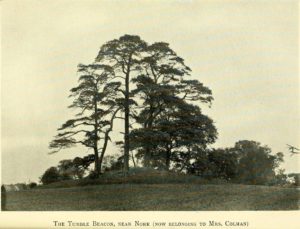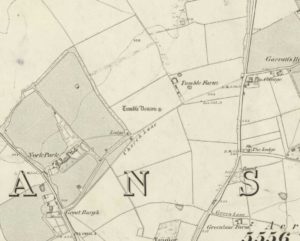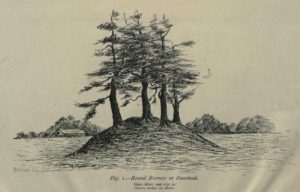Tumulus (destroyed): OS Grid Reference – TQ 288 726
Archaeology & History
This long lost prehistoric tomb is one of many that has fallen under the destructive hammer of the christian Industrialists in this part of the country. Located somewhere in the parkland grounds of Bedfordhill House (also destroyed), its memory was thankfully preserved by the renowned folklorist and historian Walter Johnson (1903) who wrote of it in his work on prehistoric Surrey, where he told:
“A few years ago a supposed barrow was levelled in Bedford Park, Bedford Hill, Tooting, and no record taken of the results. The mound was enclosed in the Park for several centuries, but when the grounds were laid out for building purposes ten or a dozen years since, it suffered rough usage, and was finally destroyed. It was nearly 100 yards long, and about 20 feet in breadth in its highest part. It ran East and West, and had several trees growing on it before its desecration…. A moat had been made round the mound for about two-thirds of its circuit. This moat was supplied with water by the Ritherdon, a small stream rising in Streatham. The name is preserved in the adjacent Ritherdon Road. The material of the mound was gravel and gravelly loam, which, in the neighbourhood, occurred only in a thin layer, thus forbidding the conclusion that the structure was merely composed of the soil dug out in making the moat. The excavated material would largely be London Clay. As the genuineness of this barrow was, we believe, called in question after its demolition, when the subject was beyond reconsideration, we mention two shreds of collateral evidence. The ground on which the tumulus stood was about the highest in the district. The name Tooting may also have some bearing, for Mr. Clinch thinks that it was a Celtic settlement where was worshipped the deity known as Taith. (Compare also toot-hill, as exemplified in Tot Hill, Headley, Tothill Fields, Westminster, famous for fairs and tournaments, also Tutt Hill, near Thetford.)”
The ‘toot’ in Toothill however, is ascribed by Gover, Mawer & Stenton (1934) as being the usual “look-out hill”. Although they do make note of the fact “that there is no hill in Tooting which would make a good look-out place.” But if this was a large barrow of some type, it would explain the etymological oddity. Any further information on this site would be welcome.
References:
- Gover, J.E.B., Mawer, A. & Stenton, F.M., The Place-Names of Surrey, Cambridge Univserity Press 1934.
- Johnson, Walter, Neolithic Man in North-East Surrey, Elliot Stock: London 1903.
- Smith, A.H., English Place-Name Elements – volume 2, Cambridge University Press 1954.
© Paul Bennett, The Northern Antiquarian


